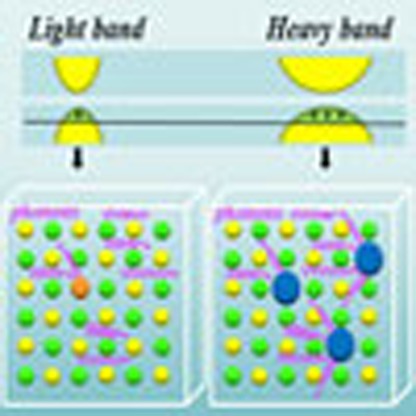- Record: found
- Abstract: found
- Article: found
Realizing high figure of merit in heavy-band p-type half-Heusler thermoelectric materials

Read this article at
Abstract
Solid-state thermoelectric technology offers a promising solution for converting waste heat to useful electrical power. Both high operating temperature and high figure of merit zT are desirable for high-efficiency thermoelectric power generation. Here we report a high zT of ∼1.5 at 1,200 K for the p-type FeNbSb heavy-band half-Heusler alloys. High content of heavier Hf dopant simultaneously optimizes the electrical power factor and suppresses thermal conductivity. Both the enhanced point-defect and electron–phonon scatterings contribute to a significant reduction in the lattice thermal conductivity. An eight couple prototype thermoelectric module exhibits a high conversion efficiency of 6.2% and a high power density of 2.2 W cm −2 at a temperature difference of 655 K. These findings highlight the optimization strategy for heavy-band thermoelectric materials and demonstrate a realistic prospect of high-temperature thermoelectric modules based on half-Heusler alloys with low cost, excellent mechanical robustness and stability.
Abstract
 Thermoelectric materials could be used to convert waste heat into useful electricity,
but the ideal substance needs to both optimize the electrical power factor and suppress
thermal conductivity. Here, the authors report a high figure of merit of 1.5 at 1,200 K
in the
p-type half-Heusler alloy FeNbSb.
Thermoelectric materials could be used to convert waste heat into useful electricity,
but the ideal substance needs to both optimize the electrical power factor and suppress
thermal conductivity. Here, the authors report a high figure of merit of 1.5 at 1,200 K
in the
p-type half-Heusler alloy FeNbSb.
Related collections
Most cited references10
- Record: found
- Abstract: found
- Article: not found
Complex thermoelectric materials.
- Record: found
- Abstract: found
- Article: not found
Ultralow thermal conductivity and high thermoelectric figure of merit in SnSe crystals.
- Record: found
- Abstract: found
- Article: not found